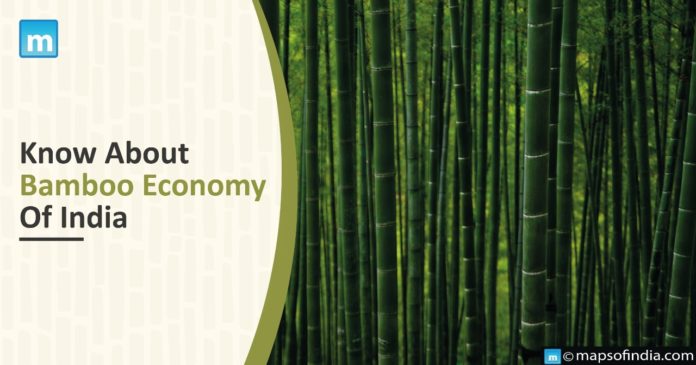The Minister of Road Transport and Highways of India, Nitin Gadkari, highlighted the economic significance of bamboo in India. During the parliament session, he also discussed some cultural aspects of bamboo.
Bamboo plays a crucial role in a developing country like India by contributing to the economy. Due to its multiple uses and characteristics, bamboo is also known as “cradle to grave” as it is used in various manners and in many walks of life. Apart from using bamboo as fuel, there are also many other benefits to it.
Bamboo cultivation has the following advantages:
- Diversity in bamboo cultivation
Bamboo is a type of grass that can grow in any climatic condition, but the tropical environment is the most suitable for bamboo. The Indian subcontinent hosts a tropical climate. Due to this, India is rich in the cultivation of bamboo.
- No specific land
Bamboo can also grow in a harsh climate and can be cultivated in every season of India. Along with this, bamboo does not require vast land or fertile land. It can also grow in gardens, fields, riversides, or hills.
- Environment friendly
Bamboo is easy to grow and is environment-friendly. It does not require much care or chemicals, fertilisers, or pesticides. They are renewable resources, and they re-grow themselves from the pup.
- Soil conservation
Bamboos are an essential resource for soil conservation. Many times, bamboo is planted to restore the soil fertility that has degraded due to overgrazing or poor farming techniques. Bamboo absorbs four times more carbon dioxide and releases 35% more oxygen than an average tree.
Low initial cost
Cultivating bamboo does not require a high initial cost, reducing the burden of debt on farmers. Hence, they give high economic returns. Bamboo is one of the fastest-growing grasses, with a feature of growing up to 35 to 36 inches within 24 hours. Bamboo is used in many ways.
Some of the uses of bamboo are as follows:
- Fabrication
Weavers use bamboo shoots to make clothes. The clothes, made of bamboo, are soft and anti-bacterial. It also keeps the person dry as well as soft. Bamboo clothes also protect the person from harmful rays, such as ultraviolet.
- Bamboo as medicine
Bamboo has rich medicinal characteristics. It can quickly cure the flu, colds and other common diseases like nausea and nasal congestion. The edible parts of the bamboo plant are used to cure patients. These parts are leaves of bamboo, bamboo shavings, sap, etc.
- Utensils from bamboo
Utensils made from bamboo are durable and affordable. Cooking food with bamboo utensils is the traditional method, which has been in use for ages. These easy-to-clean utensils give off a solid odour to food. Utensils like spoons, chopping boards, knife holders, glasses, cups, and bowls are common.
- Musical instruments
Bamboo is also used to make instruments. These instructions are very popular and widely spread. Some instruments are Xylophones, flutes, drums, etc., and different bamboo types. An old hollow and a young raw bamboo will be selected for the flute.
How effective was the Indian Forest Act of 1927?
As per the Indian Forest Act of 1927, bamboo was given tree status. Due to this status, there was a prohibition on cutting and transporting it to other regions. To cut the bamboo, special permission has to be taken. The special status resulted in harassment of the farmers and growers. Due to a lack of bamboo or no permission to cut it, India, the second largest grower, has to import it from Taiwan or China. Keeping this in mind, in 2017, the Indian Forest Act of 1927 was amended, and bamboo was shifted to the grass category from the tree. This move opened new avenues to utilise the potential of bamboo.
Contribution of bamboo to the Indian economy
According to the data in 2020, bamboo granted the industrial product segment market a 35% share. On the other hand, in 2021, the share of bamboo increased, and the estimated size of the market was 57.86 billion dollars. With the increasing share and contribution of bamboo, the estimated compound interest of the annual growth rate is 5.7%. This rising rate declares bamboo share as a “fast-growing market”.
Again in 2020, industrial bamboo product dominated the market with a 35% share. The domination includes the products made from bamboos, such as bamboo flooring, pulp, paper and plywood. The Asia Pacific region contributed the most significant revenue share, which accounts for 75% alone. These regions consist of India, China, Vietnam and Myanmar.




